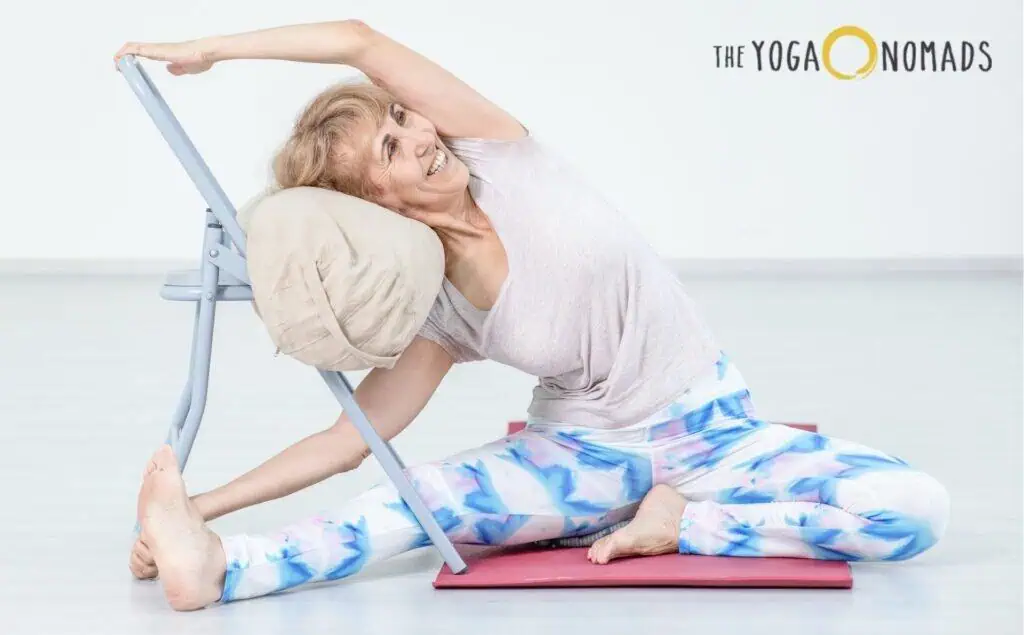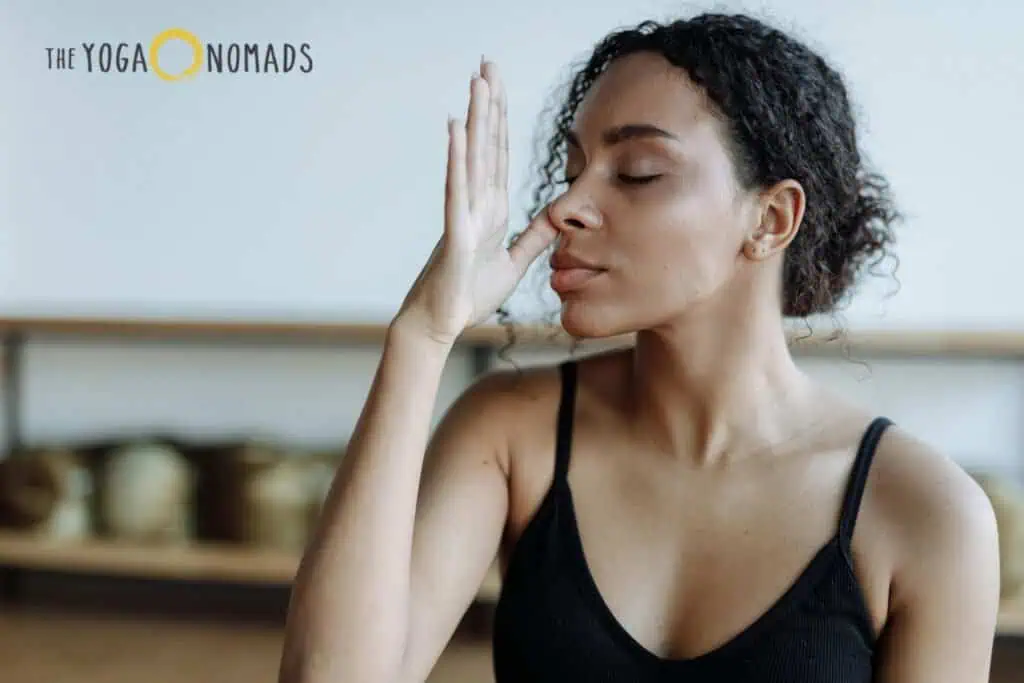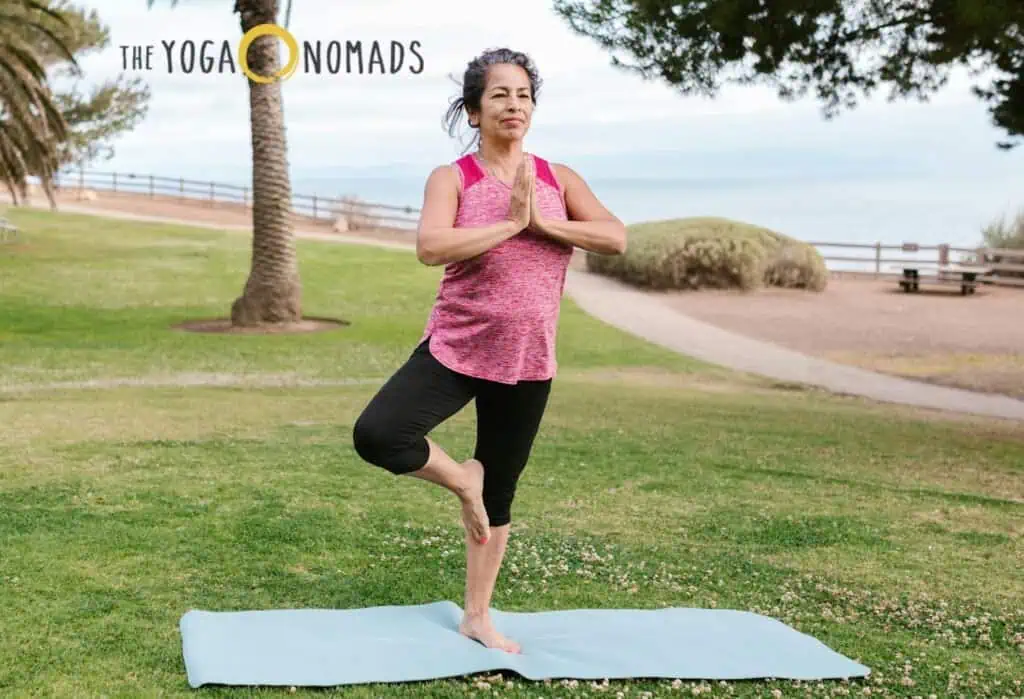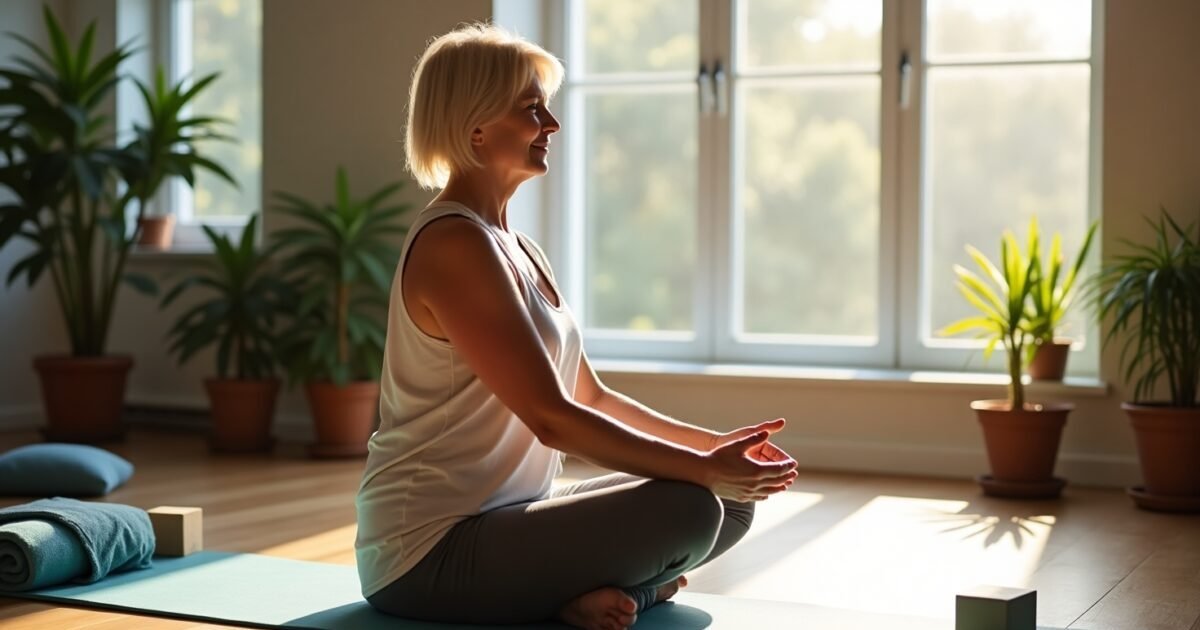Listen to a summary of this article:
Key Takeaway
Discover effective yoga poses and techniques specifically designed to alleviate joint pain and improve mobility.
Joint pain can be a debilitating condition that affects individuals of all ages, making everyday activities challenging and often uncomfortable. As more people seek alternative therapies to manage their pain, yoga has emerged as a holistic solution that not only promotes flexibility but also enhances strength and mindfulness.
This comprehensive guide to yoga for joint pain will explore various yoga styles and techniques specifically tailored to alleviate discomfort and improve mobility. Whether you’re a seasoned yogi or a complete beginner, a high-performance athlete or a senior with limited mobility, this guide will provide you with practical insights and modifications to ensure a safe and effective practice.
Contents
Is Yoga Good for Joint Pain?
Yoga offers a holistic approach to wellness with a variety of styles and practices that enhance flexibility, strength, and mobility. Through integrating gentle stretches and mindful breathing, yoga may help manage inflammation-related symptoms, increase circulation, and foster a deeper connection between the mind and body.
As a mindful practice, yoga helps us focus on being present in the moment, cultivating awareness of our breath and physical sensations. This practice not only helps in managing pain but also promotes emotional resilience and mental clarity. With consistent practice, many find that yoga can lead to improved mobility and a decrease in chronic pain symptoms.
Yoga can offer significant benefits for arthritis sufferers, particularly as a complementary practice for those dealing with rheumatoid arthritis and osteoarthritis (OA) in addition to medical treatments. Many yoga practitioners find that practicing yoga regularly helps alleviate joint stiffness and pain, especially in the wrists, elbows, knees, and hips. Adaptive yoga for arthritis allows people with arthritis to use a chair or modify yoga moves to suit their needs.
You need a good mat for a great yoga experience, so here’s a yoga mat from Manduka!
Manduka PRO Yoga Mat
See latest priceGentle Yoga for Joint Relief

If you deal with joint pain, you might be hesitant to take up a movement practice like yoga. However, there are many gentle styles of yoga that can actually bring relief to your sensitive or painful joints.
These best yoga poses are gentle yet effective, allowing individuals to bend, stretch, and move without discomfort. The holistic benefits of yoga extend beyond the physical, promoting physical and mental health for all practitioners.
Easing Joint Pain
Gentle yoga for joint relief is a beneficial way to enhance overall health and well-being. In a typical gentle yoga class, an experienced teacher will guide you through yoga poses specifically designed to reduce pain and improve flexibility.
If you’d like to try some beginner-friendly poses at home on your own, check out these gentle yoga sequences for beginners with joint pain.
Improving Joint Mobility
Improving joint mobility is essential for overall health, especially for those with conditions like arthritis, chronic pain, and joint stiffness. Engaging in a yoga program on a yoga mat can increase joint flexibility and enhance range of motion. Poses like Pigeon Pose and Bound Angle are particularly effective for the hips and knees.
Read more about five poses to improve your hip mobility.
Yin Yoga
For those with conditions like knee osteoarthritis or types of arthritis, incorporating low-impact physical activity such as Yin yoga can help significantly. This meditative style of yoga can also help improve symptoms of stress associated with chronic pain.
Experience the benefits for yourself with 3 Yin yoga sequences for joint relief.
Adapting Your Yoga Practice for Joint Pain and Stiffness

One of the most wonderful things about practicing yoga is how adaptive the practice is — it truly is for everybody, at any level of ability and movement. If you’re new to yoga or deal with issues like joint and back pain, you might be intimidated by the popular images you see online of hyper-flexible yogis bending in all directions.
The truth is, yoga is a fantastic way to exercise, increase strength, and improve issues, no matter your level of flexibility or mobility. All it takes is a little adaptation and creativity. Here are a few ways you can adapt your yoga practice to accommodate your needs.
Using Yoga Props
Using yoga props can significantly enhance your practice. These props help support joints to prevent injury and overstraining, allowing you to increase flexibility safely.
Using foam or cork yoga blocks can be especially helpful for cushioning hands and wrists, while bolsters and blankets can add extra cushion during practice.
If you deal with arthritis or joint discomfort, you’ll definitely want to read about more ways to use yoga blocks for joint pain relief.
Chair Yoga
Chair yoga involves practicing yoga while seated in a chair, making it an excellent exercise option for seniors and those with limited mobility. This form of yoga can increase flexibility and muscle strength by using the chair for support, which also helps with balance.
Overall, chair yoga poses help practitioners connect with their bodies, enhancing overall wellness and vitality. This form of yoga is accessible for people of all ages and practice levels.
Grab a chair and try for yourself with these chair yoga routines for people with limited mobility.
Aquatic Yoga
Aquatic yoga for joint discomfort is a gentle, low-impact method of exercise that has been shown to be beneficial for individuals with delicate joints. The buoyancy of the water allows for a weightless range of motion, making aquatic yoga an excellent choice for gently promoting recovery from joint pain.
Moreover, the calming environment of the pool can aid in relaxation and stress reduction. Want to know more? Read all about aquatic yoga for joint pain relief.
Holistic Practices to Support Joint Pain Management

True yoga practice is about more than just movement. It encompasses physical postures (asanas), breath control (pranayama), meditation, and mindfulness, each playing a crucial role in enhancing overall well-being.
Essentially, yoga is a whole health system designed to keep you feeling your best no matter what health issues you face, especially as you age. The wisdom of yoga can support our health both on and off the mat.
Pranayama Breathing Practices
Incorporating pranayama, specific breathing techniques, can significantly aid in pain management. This practice helps calm the nervous system and promotes relaxation, making it easier to cope with discomfort.
Pranayama also emphasizes mindfulness, helping us focus our minds on the present moment, which is crucial for effective pain relief. By integrating these techniques, individuals may find improved outcomes in managing pain, complementing traditional clinical medicine approaches.
The best part? Anyone can do these breathing practices — anywhere, anytime! Try these pranayama techniques for pain management and see how you feel.
Ayurvedic Remedies
Ayurveda, considered the “sister science” to yoga, is a health system from ancient India that offers holistic and natural solutions to the body’s ailments.
These natural treatments include herbal remedies, teas, salves, and even specific yoga practices that are believed to aid in reducing inflammation — a leading cause of arthritic pain.
Discover how you can integrate Ayurvedic practices into your lifestyle, diet, and yoga routine to help care for your sore joints.
Tips for Using Yoga as Joint Care
Not only seniors and people with arthritis should be concerned about joint health. Even young, active people should be mindful about the types of activities they put their bodies through to ensure they can age well without deterioration or injury. Yoga also offers a range of poses that focus on flexibility and stability, which are essential for maintaining joint function.
Incorporating these strategies into your routine now can have lasting benefits. By practicing joint-healthy yoga, your future older self will thank you for the care and attention you invested in your body today.
Yoga as a Recovery Routine for Athletes
For athletes and people who enjoy recreational sports, yoga can enhance athletic performance and reduce stiffness after high-impact workouts.
Yoga is gentle, making it an ideal complement to rigorous training. By incorporating yoga into their routine, athletes can prevent injury after intense training sessions. Ultimately, yoga shows that it not only aids recovery but also allows athletes to enjoy their preferred sports longer, thanks to its restorative benefits.
Learn about five recovery routines perfect for athletes with joint pain.
Seasonal Yoga Practices as Inspiration
Seasonal yoga practices can be a source of inspiration, encouraging us to show that yoga is adaptable to our needs. Weather changes throughout the year can affect joint health, so it’s important to occasionally change up your movement and yoga routine as well.
For instance, in winter, when we become cold and stiff, you might find yourself focusing on slower-moving, rejuvenating yoga styles. On the other hand, in summer, when the air is warm and energy is high, you may prefer a flow that invites more flexibility and strength.
Tune into the rhythm of nature and use the seasons as inspiration for your movement practice, making adjustments that honor your body’s needs in each season.
For more inspiration, read about seasonal yoga practices for joint health.

Conclusion
Yoga provides an adaptable and comprehensive method for alleviating joint pain through gentle movements, breathing exercises, and mindfulness techniques. Whether you opt for gentle yoga, chair yoga, aquatic yoga, or Yin yoga, the practice can be tailored to suit your individual abilities and mobility level.
By integrating yoga props, seasonal modifications, and complementary Ayurvedic remedies into your routine, you can establish a sustainable practice that not only eases discomfort but also fosters long-term joint health. Keep in mind that consistency is key! Just a few minutes of mindful movement each day can result in considerable enhancements in flexibility, strength, and overall wellness.
Pop quiz! 🧘🤔
Yoga can help manage joint pain.
Using props is a good way to support your joints during yoga.
Only the elderly should be concerned about joint health.
Frequently Asked Questions
Can yoga reduce joint pain?
Yes, yoga can help reduce joint pain by increasing circulation, reducing inflammation, and improving mobility through gentle stretches and mindful breathing.
What type of yoga is best for arthritis?
Gentle yoga and adaptive yoga are particularly beneficial for arthritis sufferers, with chair yoga being an excellent option for those with rheumatoid arthritis and osteoarthritis.
What styles of yoga are safest for sensitive joints?
Yin yoga, chair yoga, and aquatic yoga are among the safest styles for sensitive joints, as they offer low-impact movement with appropriate support and modifications.
Can using yoga props help with joint discomfort when practicing yoga?
Yes, yoga props like blocks, bolsters, and blankets provide support to prevent injury and overstraining, making poses more accessible and comfortable for those with joint pain or limited mobility.



